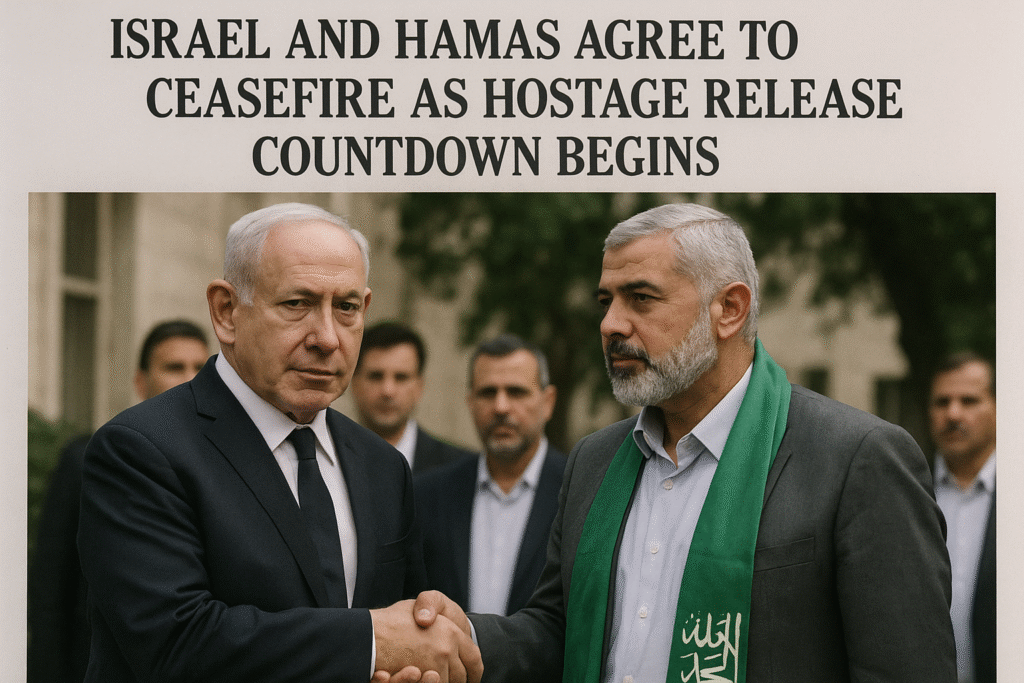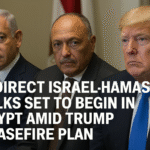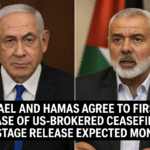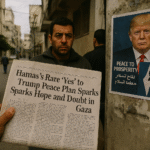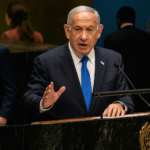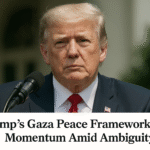By Harshit | October 10, 2025 | Gaza City | 3:00 PM
Ceasefire Takes Effect After Months of War
The Israeli military announced on Friday that a ceasefire with Hamas has officially gone into effect, marking what could be the most significant turning point since the war in Gaza erupted. Troops have begun pulling back to pre-agreed positions under the deal, which was negotiated with U.S. involvement and is tied to former President Donald Trump’s 20-point peace plan.
The agreement sets a strict 72-hour deadline: by Monday noon local time, Hamas must release all 20 remaining Israeli hostages believed to be alive. In return, Israel will free approximately 250 Palestinian prisoners serving life sentences along with 1,700 detainees from Gaza.
For now, both sides appear to be holding to the initial stage of the deal. The Israel Defense Forces (IDF) confirmed that artillery and aerial bombardments have ceased following overnight strikes that raised fears the ceasefire might unravel before it began.
Hostage and Prisoner Exchanges Ahead
The details of the hostage transfers remain closely guarded. Unlike past ceremonies, the agreement stipulates that the handovers will occur “without public ceremonies or media coverage.”
Traditionally, hostages released by Hamas are collected by the International Committee of the Red Cross (ICRC), transferred to Israel, and flown to hospitals for check-ups before reuniting with families. Israeli officials say the same process will likely be used, though the timeline and locations remain unclear.
The ICRC confirmed it is “ready to facilitate the return of hostages, detainees, and human remains” and will also coordinate humanitarian shipments.
Humanitarian Aid to Flow into Gaza
As part of the deal, humanitarian groups are preparing to send a record 600 aid trucks per day into Gaza. Supplies will include high-nutrition food, medical equipment, and materials needed to stabilize hospitals devastated by months of fighting.
UN humanitarian chief Tom Fletcher said the immediate priority is to “overwhelm Gaza with food” and restore a collapsed health system. “We need to rebuild hospitals, deliver essential medicines, and bring back medical expertise,” Fletcher told BBC Radio.
Scenes of Devastation as Civilians Return
With Israeli forces pulling back, thousands of displaced Palestinians attempted to return to northern Gaza on Friday. Residents found entire neighborhoods flattened after weeks of heavy bombardment.
Videos circulating on social media showed civilians walking through rubble, filming destroyed homes, and assisting civil defense crews in recovering bodies.
A Gaza teacher, Alaa Saleh, said he plans to return to what remains of his home despite the destruction. “My house was destroyed a year ago. I was living in a tent on the ruins, and I will go back and pitch my tent again. We just want to rebuild. We’re tired of living in shelters that protect us from neither heat nor cold.”
Political Implications and Challenges Ahead
The ceasefire is being seen as both a humanitarian breakthrough and a fragile political experiment. Prime Minister Benjamin Netanyahu hailed the agreement as a “momentous development,” while in Tel Aviv, crowds gathered at Hostages Square to pray and celebrate the potential return of captives.
Still, questions remain about the long-term future of Gaza. The peace plan requires continued negotiations on establishing a Palestinian state, the role of the Palestinian Authority, and security guarantees for Israel. Critics warn that unresolved issues could derail the process.
UN Special Rapporteur Ben Saul noted, “This is a very complex plan with many moving parts. A lot can go wrong. Without timelines for governance and accountability, the conflict could easily resume.”
U.S. and International Role
The United States has moved 200 troops to Israel to coordinate monitoring of the ceasefire, though officials stress they will not enter Gaza. UK Foreign Secretary Yvette Cooper confirmed Britain will not deploy troops but will participate in reconstruction and aid efforts with partners in Jordan and Egypt.
Former President Trump, whose peace framework underpins the deal, claimed credit for the breakthrough. “We are at a momentous development,” he wrote, calling the ceasefire and prisoner exchange “the first step toward a new Middle East.”
Outlook: A Fragile Window of Hope
The next 72 hours will be decisive. If Hamas delivers on its commitment to release hostages, and Israel follows through on freeing prisoners while maintaining its withdrawal, the deal could mark the beginning of a longer-term settlement.
For civilians on both sides, the ceasefire offers a fleeting but desperately needed chance to breathe, rebuild, and hope for peace.

